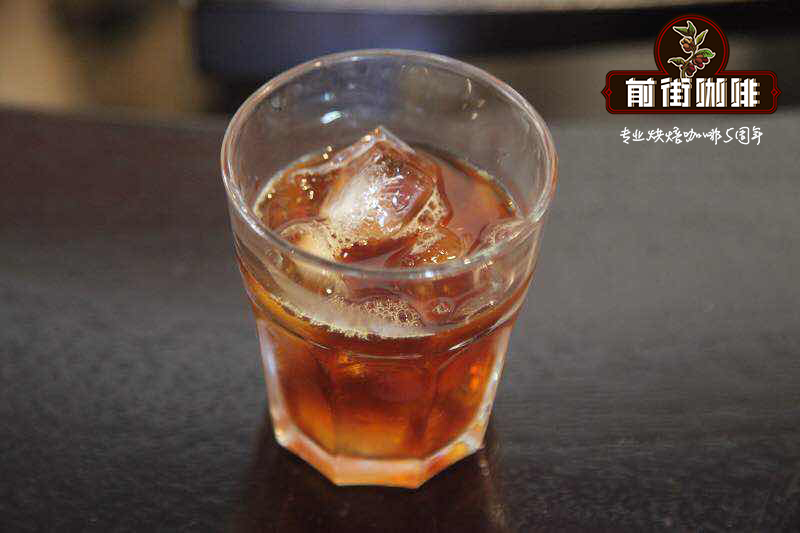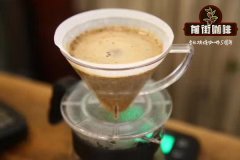Espresso Coffee Espresso Coffee

Professional coffee knowledge exchange more coffee bean information please follow the coffee workshop (Wechat official account cafe_style)
. Determine the best extraction time as accurately as possible
Although the brewing time of an espresso is usually 22 seconds, the actual time it takes you to complete a perfect espresso may vary for some factors. Most importantly, end the extraction process at the right time to avoid over-extraction or underextraction of espresso. The key here is to grind your coffee just right, plus the pressure used when pressing the powder. Too much pressure or too fine grinding will cause the water to flow too slowly because the water is blocked. Grinding too rough or filling too loosely will cause the water polo to come out too quickly because there is not enough time to come into contact with the coffee grounds.
The aromatic properties of the extract do not have much bitterness.
The most important thing is to avoid extracting too much bitterness from the ground coffee, but still make sure that the aromatic oil and the good taste of the coffee are fully extracted. The general rule is that if you cook for too short, it will not reach its full taste, although if you cook for too long, you may extract too much bitterness and pollution from the single espresso.
Condensed coffee should be concentrated coffee, not too thin or too light, not too bitter. If you have 20-25 seconds to take pictures of 30 milliliters (1 ounce), you're doing the right thing. Remember, most of the "pain" comes from the end of the shot.
Diagnose and troubleshoot for the perfect coffee lens
The main factors that affect your perfect espresso shot include: how much pressure is produced by your espresso machine, how high the extraction temperature is, and how you grind the coffee (whether you use a burr grinder instead of a blade grinder, and the fineness of the coffee). The best time to brew espresso depends on these factors. You need to be familiar with three layers of espresso-Crema,Body and Heart.
Equally important are the initial quality of the coffee, the freshness of the coffee, whether it is properly stored, and whether the roaster is good at baking your espresso.
Make sure the coffee is recently roasted and transported in a sealed bag. Grinding should be carried out immediately before extraction.
Also, don't forget to preheat coffee cups and coffee pots. All these details are important to create a quality espresso shot.
One thing to note is the acidity of coffee-low-acid coffee produces an insipid taste, while highly acidic espresso has a better taste.
Troubleshooting: flowing espresso is too slow
Watch the espresso flow out of the spout. If the espresso flows too slowly, then maybe you grind the coffee down, or you press it too tightly.
Changing one or both of these items can help fine-tune shot so that it flows out correctly. If you let it flow very slowly, the result will be that espresso is overextracted, which can be dark or bitter.
Troubleshooting: espresso flow is too fast
On the contrary, if the espresso comes out of the spout too fast, then you may not tamp or compact the coffee. Another thing to check is whether you grind the coffee into too big particles.
Change one or two ways to adjust the espresso so that it flows out of the spout. If you let it flow too fast, it will lead to insufficient water or extraction.
Important Notice :
前街咖啡 FrontStreet Coffee has moved to new addredd:
FrontStreet Coffee Address: 315,Donghua East Road,GuangZhou
Tel:020 38364473
- Prev

What are the characteristics of sun-tanned coffee beans? introduction to the characteristics of Sidama Sidama
Professional coffee knowledge exchange more coffee bean information please follow the coffee workshop (Wechat official account cafe_style) front street introduction: sun Sidama Sidama Fakui coffee bean appearance: [sun sun Sakui bean]: the bean body is smaller, the green is yellowish, and the particle size varies greatly. [washed Huakuisheng beans]: coffee raw bean green
- Next

Know what is manning coffee and how to drink it correctly
Professional coffee knowledge exchange more coffee bean information please follow the coffee workshop (Wechat official account cafe_style) front street introduction: Manning coffee, mainly produced in Sumatra, Indonesia. Unlike the name Manning, which now names a coffee bean through the manor, grade and variety of beans, long before the concept of boutique coffee, Mante
Related
- Beginners will see the "Coffee pull flower" guide!
- What is the difference between ice blog purified milk and ordinary milk coffee?
- Why is the Philippines the largest producer of crops in Liberia?
- For coffee extraction, should the fine powder be retained?
- How does extracted espresso fill pressed powder? How much strength does it take to press the powder?
- How to make jasmine cold extract coffee? Is the jasmine + latte good?
- Will this little toy really make the coffee taste better? How does Lily Drip affect coffee extraction?
- Will the action of slapping the filter cup also affect coffee extraction?
- What's the difference between powder-to-water ratio and powder-to-liquid ratio?
- What is the Ethiopian local species? What does it have to do with Heirloom native species?

